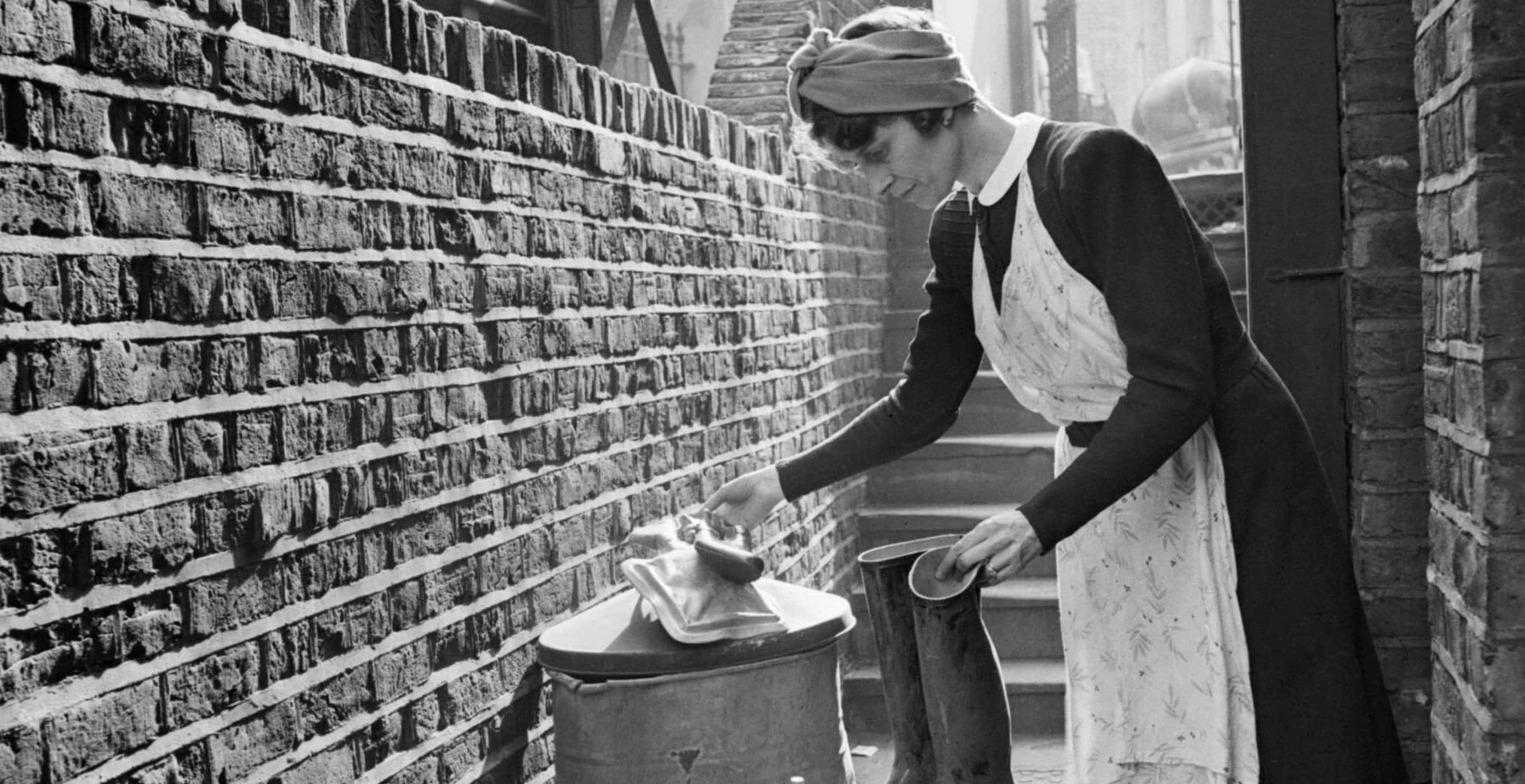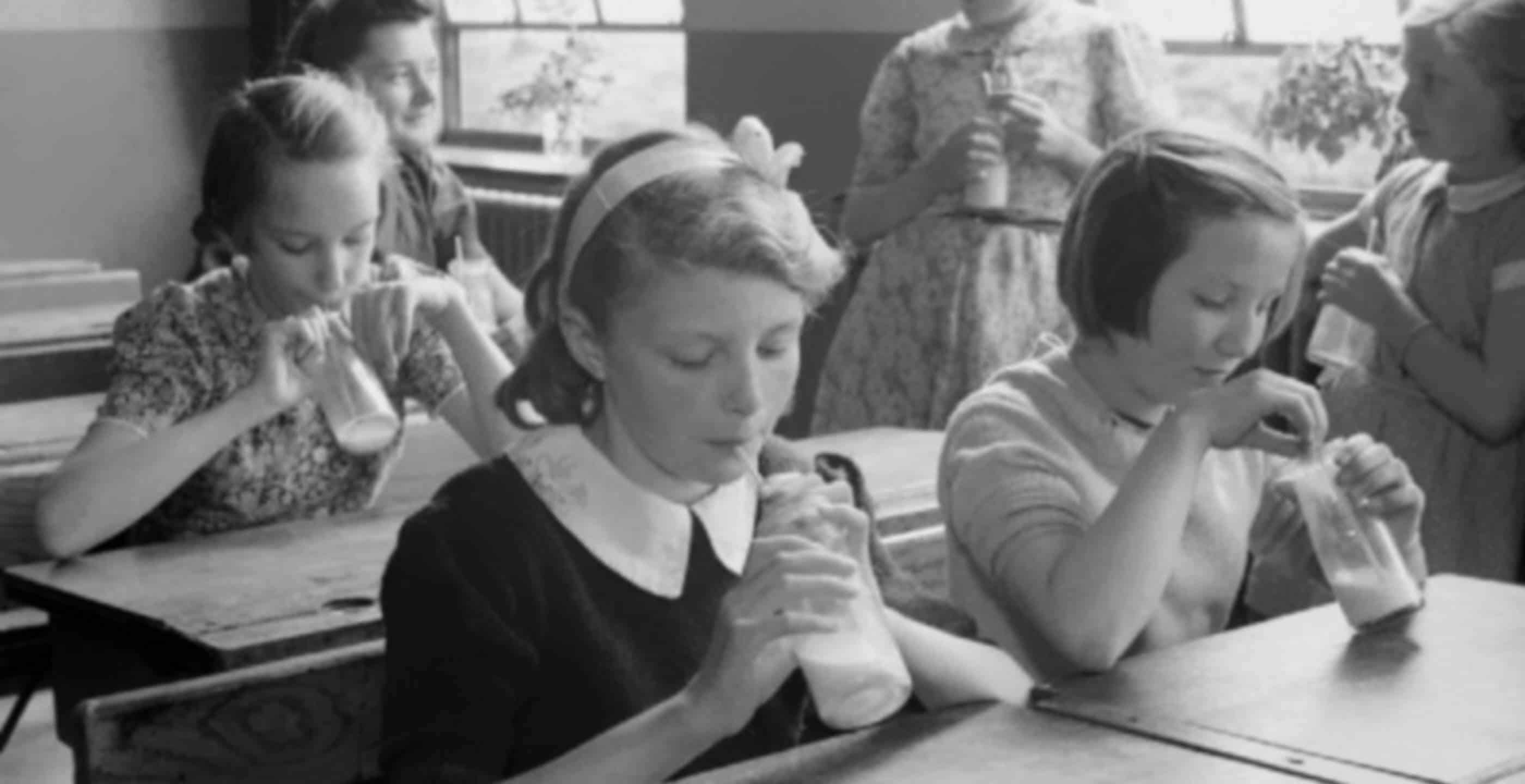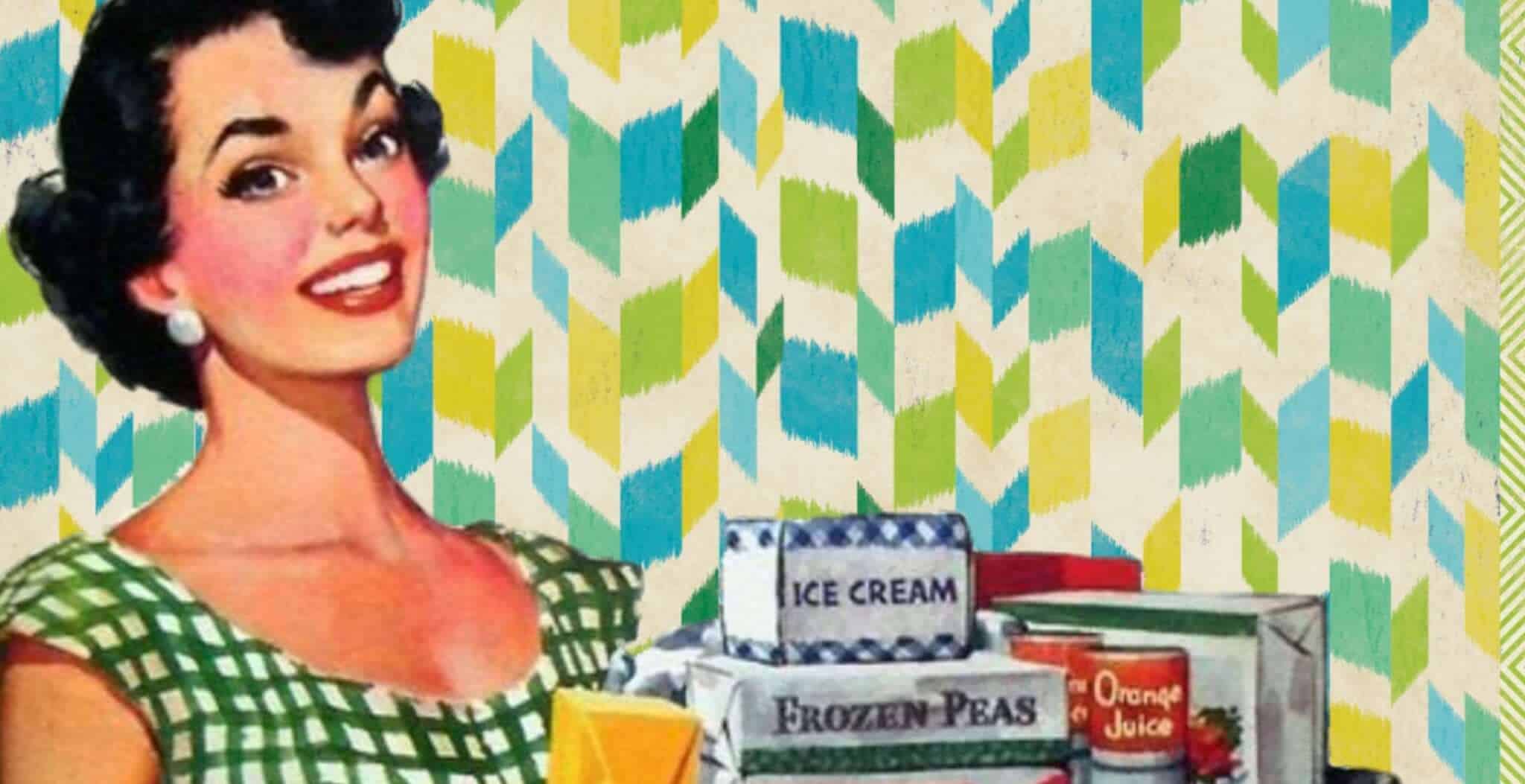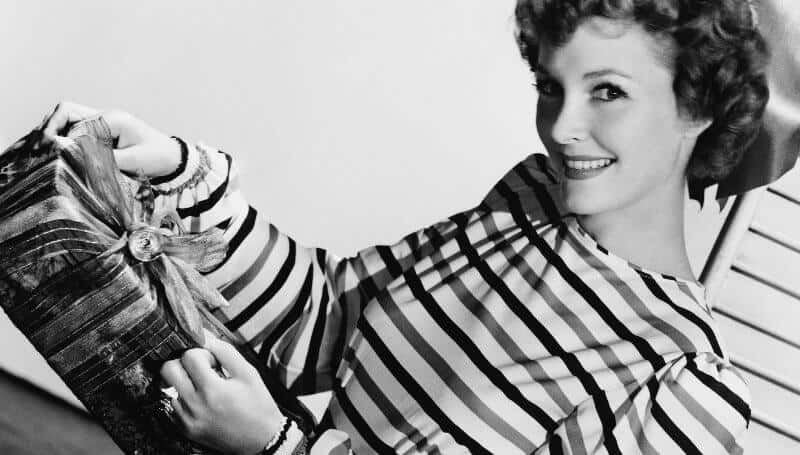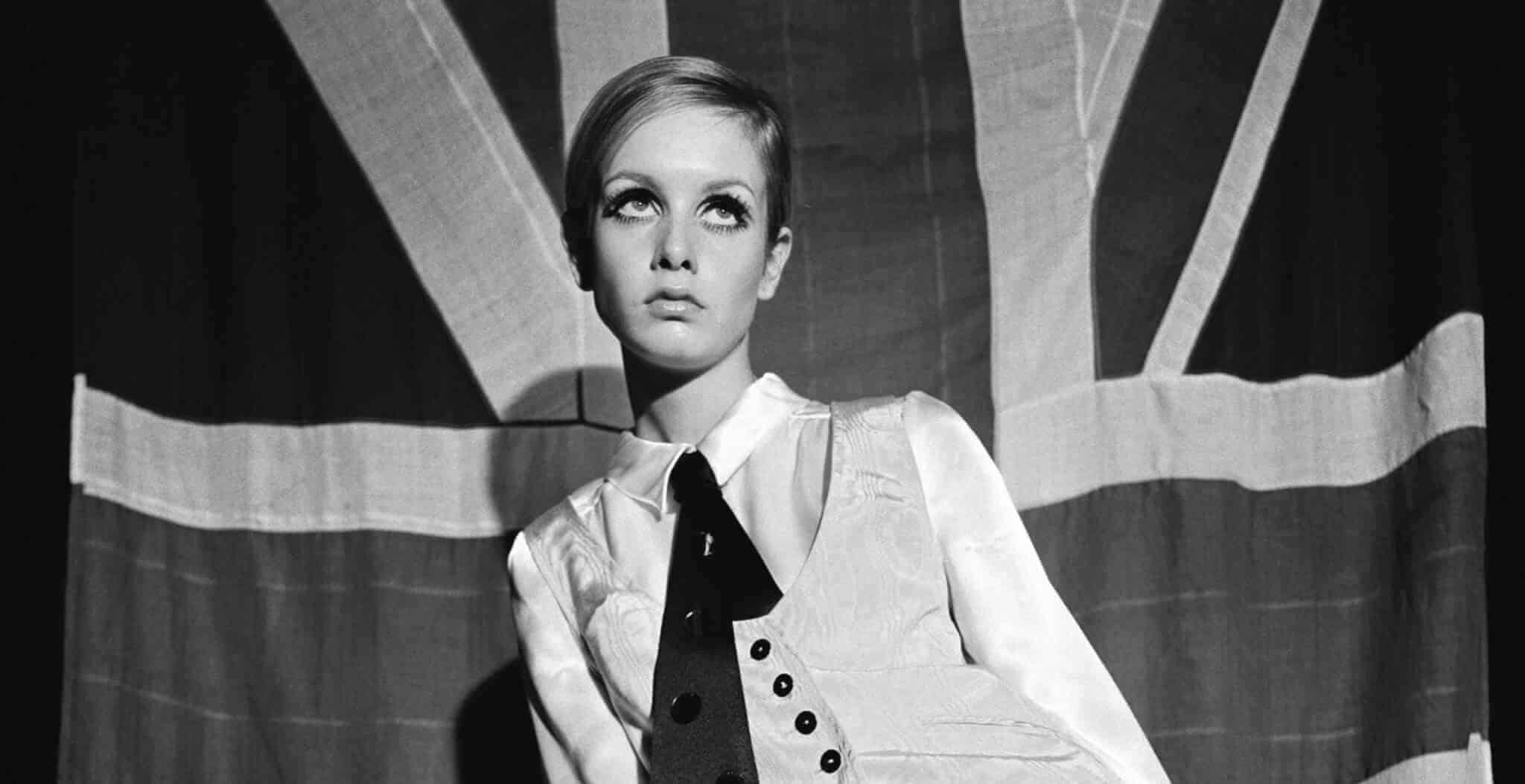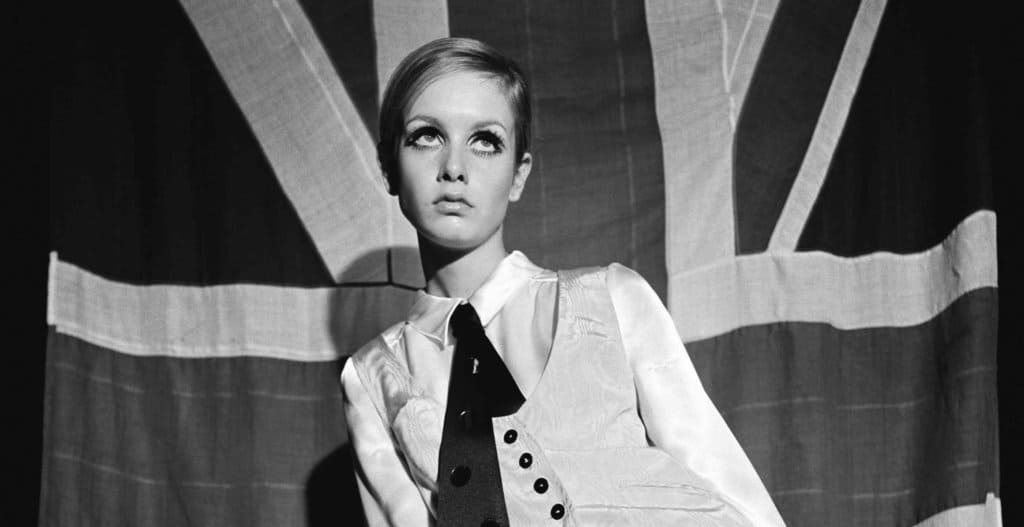Today, the state of the planet and our environment is at the very top of the political and ethical agenda. We are all doing our best to try and mitigate the situation by cutting waste and recycling wherever possible.
In the UK recycling was a way of life in the 1950s and 1960s. The years of wartime austerity had taught people to ‘make do and mend’ and not to waste a thing.
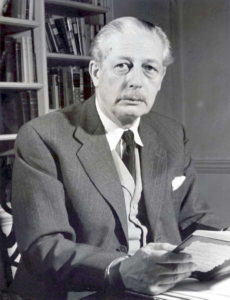 Prime Minister Harold Macmillan
Prime Minister Harold Macmillan
In 1957 the Prime Minister Harold Macmillan told the nation, “Most of our people have never had it so good”. For many ordinary people though, times were still hard, money was short and millions of people were struggling to make ends meet.
There were no supermarkets and few had the luxury of a freezer (or even a fridge!) so shopping was done daily. At the greengrocers, fruit and vegetables would be loose and sold in paper bags. Everyone had a basket or shopping trolley to transport their goods home: no plastic carrier bags in those days!
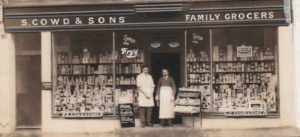 S. Cowd and Sons, Grocers. With kind permission, Fairlynch Museum, Budleigh Salterton, Devon
S. Cowd and Sons, Grocers. With kind permission, Fairlynch Museum, Budleigh Salterton, Devon
Produce was seasonal; for example, in winter a favourite replacement for a green salad was shredded cabbage with onion and carrot, dressed with Heinz Salad Cream – a 1950s version of coleslaw, and very tasty with a couple of slices of haslet or luncheon meat!
At the bread shop, loaves would be wrapped in paper tissue and at the butchers, the meat would also be sold wrapped in paper. Housewives would sometimes have their groceries delivered to the house by a boy on a bicycle with a rather large basket on the front.
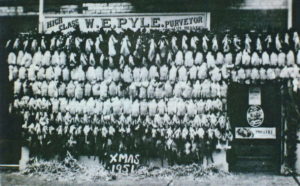 W. Pyle, Butchers, Christmas 1951. With kind permission, Fairlynch Museum, Budleigh Salterton, Devon.
W. Pyle, Butchers, Christmas 1951. With kind permission, Fairlynch Museum, Budleigh Salterton, Devon.
The milkman would make doorstep deliveries each day in his electric milk float. Milk came in glass bottles with foil lids; after the bottle was empty it would be washed out and returned to the milkman to be used again. Many people will remember collecting the foil milk bottle tops and sending them in to the ‘Blue Peter’ Guide Dogs Appeal in 1964!
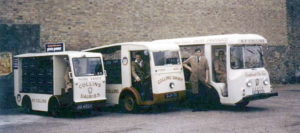 Milk floats. Licensed under the Creative Commons Attribution-Share Alike 4.0 International license.
Milk floats. Licensed under the Creative Commons Attribution-Share Alike 4.0 International license.
The rag-and-bone man was a regular sight on the streets with his call of ‘Any old iron’ or ‘Rag bone”. Some rag-and-bone men would push a hand cart, others might have a horse and cart. The rag-and-bone man would take old clothes, pots and pans, shoes and so on, to either sell on or to repair. Any bones collected would be sold to make glue and fertilizer. The rags were used in paper-making and the rag-and-bone man would sell any metal as scrap. One of the nation’s favourite comedies in the 1960s, ‘Steptoe and Son’, was based on two rag-and-bone men in London.
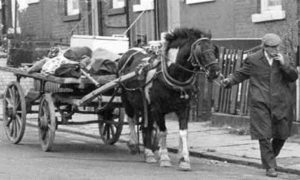 Rag-and-bone man in London. By kind permission Marty Edward.
Rag-and-bone man in London. By kind permission Marty Edward.
The ‘Pop Man’ came around weekly selling soft drinks, Dandelion and Burdock, fizzy drinks and so on. Children would wash out and return the empty bottles to the pop man in return for money: a ha’penny a bottle in the 1920s, rising to 10p by the 1980s. A great way to stretch your pocket money! Empty bottles could also be returned to the off license for a few coins.
Old newspapers were also re-used, either cut up into squares as emergency toilet paper, or rolled and tied to form paper ‘logs’ to light the coal fire. Food scraps were often burned on the fire: vegetable peelings went onto the garden compost heap.
Knitted items like children’s jumpers and sweaters, once outgrown, would be unravelled and the wool used to knit something else, such as mittens or scarves. Socks were darned and clothes were mended: every home had a ‘button box’ full of buttons taken from old shirts to be used again. Shirt collars, once they had become frayed, would be carefully unpicked, turned inside out and sewn back on. Clothes would be passed down from the eldest child to the younger ones.
For many families, bath night was once a week, often on a Sunday. Water was heated either by a back boiler behind the fireplace or by expensive immersion heater, so when a bath was run, the water was just a few inches deep. Quite often a family would bathe, one after another, in the same water!
Household dustbins were made of galvanized steel, small by today’s standards but then there was little packaging to be disposed of in those days. The dustbin would be collected from the back door by the dustman, hoisted onto his back, carried to the dustcart, emptied and then returned.
Today we realise the need to protect the environment and some of the recycling /’make do and mend’ traditions of the 1950s and 1960s are now returning. Independent zero waste shops are widespread and more paper packaging is becoming available in some supermarkets who are also trialling selling their fruit and vegetables loose rather than plastic-wrapped. Deposit return schemes are due to be rolled out nationwide and in some areas a modern-day rag-and-bone man and the milkman with his electric milk float and recyclable glass bottles are making a comeback.
